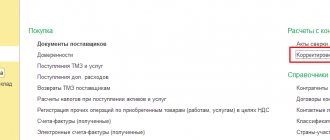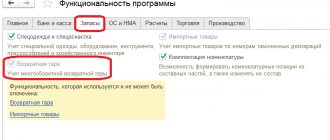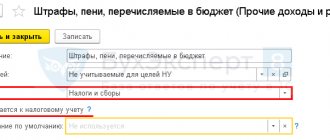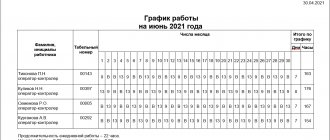Organizations on OSN or simplified tax system without VAT
An organization has the right not to pay VAT in two cases:
- If it applies the general taxation system and has revenue of less than 2 million rubles for the three previous consecutive calendar months, by virtue of Article 145 of the Tax Code of the Russian Federation.
- If special tax regimes are applied: simplified tax system, UTII, unified tax system or patent system in relation to activities falling under these regimes.
The first option is voluntary, that is, having decided for yourself whether it is profitable to work with VAT or without VAT, and having chosen the second option, the LLC can work without VAT at will (if its company meets the requirements of paragraph 1 of Article 145 of the Tax Code of the Russian Federation). But in simplified regimes there is no VAT due to the provisions of the Tax Code. But exemption from VAT does not apply to transactions involving foreign economic activity, namely the import of goods into the territory of Russia. Transactions on the sale of excisable goods are not exempt from paying value added tax. In addition, the organization has the right to act as a tax agent in relation to other VAT payers.
Working with VAT and without VAT, first of all, depends on the type of activity of the taxpayer. Obviously, when selling goods at retail, a businessman can purchase them from other entrepreneurs or organizations under preferential tax regimes, and then it does not matter to him whether his invoices contain an allocated tax. A sample invoice without VAT may upset wholesale buyers, since it is important for them to have input tax in order to receive a deduction.
If an organization on the general taxation system has decided to operate without VAT, then it must collect and submit to the Federal Tax Service all the documents that are necessary to obtain an exemption from VAT. These include:
- notification of the established form on the use of the right to exemption from VAT;
- extract from the balance sheet (for organizations on the OSN and organizations that have switched from the Unified Agricultural Tax to the OSN);
- an extract from the sales book, copies of the journal of received and issued invoices for the previous reporting period (for organizations on the OSN);
- extract from KUDiR (when switching from the simplified tax system to the OSN).
All documents must be submitted to the Federal Tax Service no later than the 20th day of the month from which the organization wants to operate without VAT. The tax inspectorate does not send any decision in response, since such an exemption, by virtue of the Tax Code of the Russian Federation, is not permissive, but notifying in nature. But before making such a decision, it is worth comparing the options and understanding what is more beneficial for the economic prospects of your LLC: with VAT or without VAT.
The buyer does not pay VAT
When the supplier of an organization that operates without VAT is an organization that pays VAT, the contract, invoice for payment and shipping documents addressed to the buyer (invoice or act) are drawn up with VAT. In the corresponding columns and places in the text of the documents, the tax rates and amounts that form the total total amount of the document are indicated.
The VAT payer, obliged in accordance with clause 3 of Art. 169 of the Tax Code of the Russian Federation, upon sale, draw up an invoice; with the written consent of the parties to the transaction, this document may not be drawn up for taxpayers working without VAT (subclause 1, clause 3, article 169 of the Tax Code of the Russian Federation).
Our material “How to refuse invoices if the buyer is a VAT defaulter” will help you obtain consent to .
In this case, the VAT payer must reflect in the sales book either the details of the primary documents or the details of the invoice issued for himself in a single copy. Failure to perform these actions will result in an understatement of the amount of VAT on sales.
If the organization purchasing goods (works, services) operates without VAT, then it takes into account the tax highlighted in the documents of the supplier working with VAT in one of the following ways:
- In full, when accepted for accounting, it is included in the cost of these goods (works, services) at a time, according to subparagraph. 3 p. 2 art. 170 Tax Code of the Russian Federation. This method is used by organizations that use the exemption from VAT payer obligations under Art. 145 and 145.1 of the Tax Code of the Russian Federation, as well as organizations located on UTII (taking into account the provisions of clause 7 of Article 346.26, Chapter 26.3 of the Tax Code of the Russian Federation).
- In a certain order (depending on the type of expenses to which the tax relates and the fact of their payment) it is included in expenses that reduce income. This method is used when using the simplified tax system with the object of taxation “income minus expenses” and the unified agricultural tax (subclause 8, clause 2, article 346.5, chapter 26.1 and subclause 8, clause 1, article 346.16, chapter 26.2 of the Tax Code of the Russian Federation).
For more details, see the material “How to take into account input VAT under the simplified tax system?” .
In documents for payment to a supplier working with VAT, in the “Base of payment” field, the buyer who does not pay VAT must highlight the amount of VAT that is part of this payment.
A supplier working with VAT, upon receiving an advance payment from a buyer who does not pay VAT for upcoming deliveries, in the usual manner for a VAT payer, issues an invoice for the received advance in one copy. A buyer who does not pay VAT does not need an advance invoice issued by the supplier.
What should a supplier/seller do in a situation where a VAT non-payer buyer returns the goods? You can study the expert opinion of ConsultantPlus employees by signing up for a free trial access to K+.
Disadvantages of working with VAT
The main disadvantage that discourages most businessmen from working with VAT is the need to pay this tax. VAT is rightfully considered one of the most important and complex taxes in Russia. In addition, it has federal significance. Moreover, it has been increased from 2021 to 20%. Therefore, being a VAT payer means maintaining full tax and accounting records. It means:
- carefully check your suppliers;
- reconcile all incoming primary documents containing VAT;
- maintain the necessary tax registers;
- fill out sales books and purchase books;
- prepare and submit tax returns;
- have an additional object registered for inspection and attention of the Federal Tax Service.
If an LLC without VAT applies the simplified tax system with the object “income minus expenses,” then for it the purchase of goods from suppliers who pay VAT makes it possible to take into account the received VAT as part of its expenses. Even if the tax is highlighted in the invoice. But an LLC on the simplified tax system with the object “income” does not have such an opportunity: the buyer will not be able to deduct VAT even if there is an invoice.
Organizations working on special tax purposes with VAT deal with more qualified and picky inspectors from the tax authorities. This is due to the fact that VAT is fraught with many pitfalls, and any detected mistake by the taxpayer will lead to many thousands of fines and penalties. Whereas taxpayers under preferential regimes are spared the possibility of making such errors by the very principles of the applied taxation regime.
Advantages of working with VAT
Many large enterprises prefer to work only with VAT counterparties. Organizations operating without VAT have a greater risk of being rejected by a potential client or supplier. This is the main benefit of switching to VAT. A company that is not a VAT payer has to think about how to increase its competitive attractiveness. This means that VAT evaders need to look for and advertise their advantages, which will make cooperation with them profitable. The main advantage of working with VAT is the ability to deduct tax on all purchased goods or services. Despite the fact that VAT is refunded only in the amount that was paid in the price of the goods to your supplier, this opportunity really allows you to save. But if the buyer is provided with goods without VAT on the OSN (for example, a sample invoice without VAT is issued), then he will not be able to reimburse it. Thus, this advantage of working on VAT is important only if the price of a product from a supplier who works with VAT is lower or equal to the price of a similar product from a supplier who works without VAT.
“Simplified” and VAT: an unprofitable divorce?
Many capital enterprises that have switched to “simplified” or taken advantage of the VAT exemption are faced with a problem: even regular purchasing firms refuse to work with them. Our article will help answer the questions of who benefits from refusing to pay VAT, and who is better off working under the regular taxation system in order not to lose customers.
The main advantage of the “simplified tax” is, of course, the reduction of the tax burden of the enterprise: in accordance with paragraph 2 of Article 34611 of the Tax Code, the single tax replaces the income tax, VAT, property tax, sales tax and the single social tax. Even if we compare paying a single tax at a rate of 15 percent on income reduced by the amount of expenses, and paying only one income tax at a rate of 24 percent, the benefit of a special tax regime becomes obvious.
However, the loss of customers may negate any benefits of the “simplified” approach. The reason for this behavior of counterparties is a break in the chain of input and output VAT between sellers and buyers. Let's look at an example of what happens in the economy of a buyer firm that decides whether to purchase goods from a VAT evader. Three companies are connected by transactions: Alpha LLC is a supplier and resells goods. At the same time, “Alpha” is a VAT payer, it can choose whether to pay it VAT or not, but it is a VAT payer. Let’s compare (using conditional data) two situations when Gamme’s goods are sold by a supplier, who is a VAT payer and who is not.
Calculations show that due to the break in the VAT chain, the final buyer must pay to the budget not 10 rubles of VAT per unit of goods, but as much as 56! The overpayment at first glance is huge - 46 rubles.
True, it is more correct to assume that in the first case he pays 10 rubles of VAT to the budget, and 40 rubles of VAT to the supplier in the price of the goods. In this case, it turns out that he overpays VAT in the amount of only 6 rubles (46 – 40). Gamma reimbursed the remaining amount of VAT in the sales price of the goods.
Even this insignificant loss in VAT will be enough for many buyers to refuse to cooperate with suppliers who have switched to the “simplified” system. However, the main disadvantage lies in another consequence of breaking the VAT chain.
In accordance with the law, input VAT is included in the cost of goods from a company that does not pay VAT. That is, the selling price increases by the amount of VAT included in the cost of the product. And in price competition, the goods of the purchasing company lose in comparison with the goods of those companies that purchased them from VAT payers. True, the magnitude of this loss will depend on the profitability of the resale of the goods by the purchasing company.
Let's compare the results of transactions when he sells his goods with a high and low markup ( ).
So, at Gamma, when resale with a high markup of goods purchased from a VAT defaulter, the selling price increases by 53 rubles (737 - 684), which is relatively little, approximately 7 percent of the price of the goods (53 rubles / 737 rubles x 100%). In this case, VAT is overpaid by 9 rubles (123 – 60 – 54), which is the same 7 percent of the amount of VAT payable (9 rubles / 123 rubles x 100%).
If Gamma resells the product at a low markup, the indicators will seem to be the same: the selling price will increase by 53 rubles (437 – 384), and VAT payable will increase by 9 rubles (73 – 10 – 54). However, in percentage terms, Gamma’s losses will amount to 12 percent (53 rubles: 437 rubles x 100% and 9 rubles: 73 rubles x 100%, respectively).
It turns out that the higher the share of added value in the price, the lower the financial losses of a company that buys goods from a VAT evader. With a high markup in the price, many buyers can turn a blind eye to small losses if the VAT evader has other, more important interests when purchasing goods.
But this is not the last factor that will be taken into account when purchasing goods from a “simplified” company. After all, the buyer company can be:
1) intermediate consumer (reseller of goods, works, services);
2) the end consumer;
3) also be a VAT non-payer.
In the first situation, the buyer will sell goods (works, services) further along the chain. Therefore, the price factor is important to him and he will pay VAT. This means that when deciding to switch to the “simplified” system (become a VAT defaulter), it is important to take into account what share of the markup the buyer plans (at least to predict this figure). Managers of wholesale trading companies and manufacturing enterprises, for example, will have to think about this.
In the second case, the chain of further commercial movement of goods is interrupted. It does not matter who the buyer will be: commercial firms, government agencies, public or non-profit organizations or individuals. In any case, the consumer does not have to pay VAT and has price competitive advantages. Consequently, the selling company can become a VAT defaulter without loss. The “lucky ones” include retail trade enterprises and firms providing services to the public. And, finally, the third case, when the buyer is also a VAT defaulter. Here everything will depend on the specific situation: how many other firms are in the chain to the final consumer, how their economic relations are intertwined, and which of the further consumers is also a VAT defaulter.
If, right down to the end consumer, all companies are not VAT payers, then switching to the “simplified tax” is just as safe as with the second option. But if somewhere in the chain there is a company that pays VAT, then most likely it will feel the consequences of your failure to pay value added tax. This means that the echo of dissatisfaction (refusals of deliveries) can reach your company. Unfortunately, enterprises in any field can find themselves in a similar situation: manufacturing, trade, services.
| New generation berator PRACTICAL ENCYCLOPEDIA OF AN ACCOUNTANT What every accountant needs. The full scope of always up-to-date accounting and taxation rules. Connect berator |








